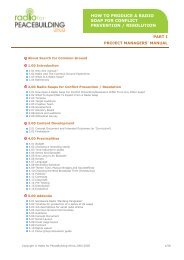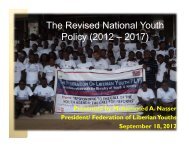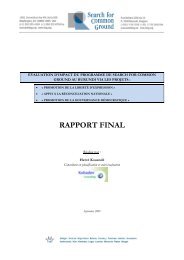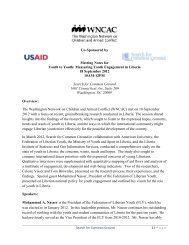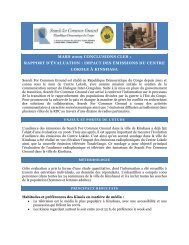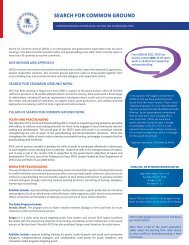The Common Ground Network for Life and Choice Manual
The Common Ground Network for Life and Choice Manual
The Common Ground Network for Life and Choice Manual
Create successful ePaper yourself
Turn your PDF publications into a flip-book with our unique Google optimized e-Paper software.
have similar views on the issue, the questions of "whose agenda is being served by this process?"<br />
<strong>and</strong> "why does only one side want to find common ground?" arise <strong>and</strong> undermine the potential<br />
effectiveness of the ef<strong>for</strong>t right from the start. A balanced nucleus will be a source of: (1)<br />
credibility with potential participants; <strong>and</strong>, (2) protection against inadvertently using slanted<br />
language or unwittingly making decisions (e.g., about meeting place) that send alienating<br />
messages to one side or the other.<br />
If you are on a particular side of an issue, your first job, then, will be to find a counterpart<br />
on the other side with whom to collaborate. If you do not have strong views on this issue, or see<br />
yourself playing a convener or facilitator role, we recommend that you recruit at least one person<br />
on each side of the issue to work with as soon as possible. In our view, taking the time <strong>and</strong><br />
making the considerable ef<strong>for</strong>t that may be required to develop a representative core group are<br />
necessary investments.<br />
It is not unusual <strong>for</strong> people who are interested in beginning a common ground initiative<br />
to find this first step difficult, <strong>and</strong> to be uncertain about how to find the needed people. <strong>The</strong>re is<br />
no single right way to go about this. Talking to people you already know who are on both sides<br />
of this issue, trying to rouse their interest, <strong>and</strong> asking them <strong>for</strong> names of others who might be<br />
interested is a good place to start. You may need to talk to many people to find a few with<br />
whom you will feel com<strong>for</strong>table working. Patience, perseverance <strong>and</strong> courage are likely to be<br />
required in taking this first crucial step. Some possible approaches based on real-life examples<br />
are:<br />
• Tapping into an existing personal network. In Davenport, Iowa, they were<br />
community activists who had worked together in the past. In Philadelphia, the<br />
common link was a women’s resource center. In Buffalo <strong>and</strong> Oregon, the<br />
nucleus <strong>for</strong>med in an ecumenical religious organization.<br />
• Holding a public program on common ground with pro-life <strong>and</strong> pro-choice<br />
speakers. A Clevel<strong>and</strong>, Ohio ef<strong>for</strong>t began this way. At the <strong>for</strong>um, common<br />
ground was introduced <strong>and</strong> an invitation to become involved was extended.<br />
• Using the media by writing a letter to the editor, or an op-ed in the newspaper<br />
inviting a dialogue, or getting the interest of a local reporter. In St. Louis, the<br />
Op-ed of Andrew Puzder, a well-known pro-life attorney drew the attention of<br />
B.J. Isaacson of Reproductive Health Services, an abortion provider. This led<br />
to their first meeting. In Norfolk, a reporter wrote about common ground <strong>and</strong>



